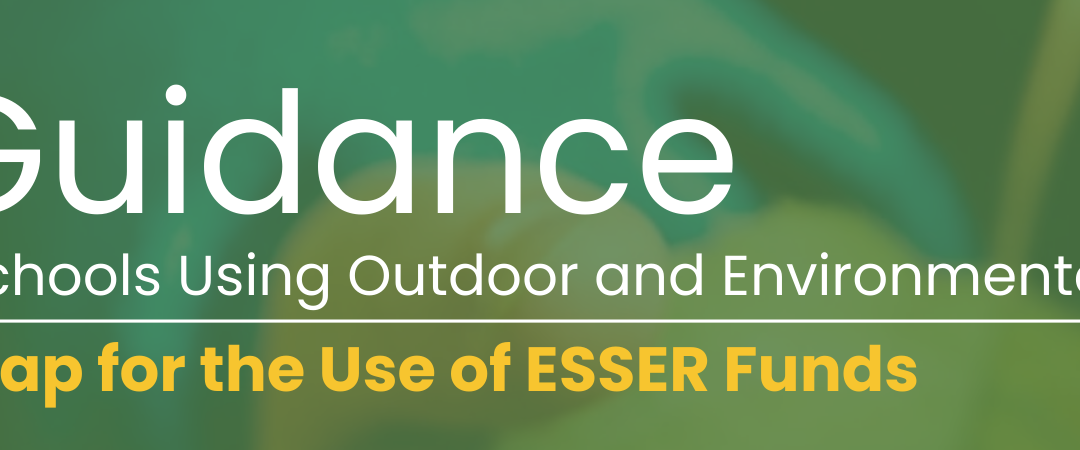When the spread of a novel coronavirus forced the closure of schools across the country in spring of 2020, educators began to explore a multitude of strategies for a safe return to in-person learning for students, teachers, and staff. The challenges and consequences associated with remote and hybrid learning models cannot be overstated, especially in our most vulnerable communities. Nationwide, innovative leaders and schools found creative ways to navigate those challenges. Among the success stories were schools that took learning outdoors.
Environmental education, with its focus on hands-on learning and authentic problem solving can transform education. Using the outdoors as a context for learning across the curriculum is proven to promote not just academic success, but enhance critical thinking, collaboration, and leadership skills. These findings are not new—and proponents of environmental and outdoor education have been touting them for decades—but the negative impacts of school closures and remote learning, combined with the pockets of success in using outdoor learning to overcome those impacts have thrust the facts into a new light.
Environmental and outdoor learning supports students’ social emotional learning, including more differentiated instruction, project-based learning, and providing more space for student voice and choice—all key to helping students develop a sense of agency and confidence.
It’s time to take a fresh look at environmental education and develop strategies to help students recover from learning loss, trauma, and isolation. This time of transition and reimagining education offers a critical window of opportunity to accelerate efforts to ensure every student gets to benefit from outdoor learning experiences every day.
COVID relief packages passed by Congress in 2020 and 2021 provided nearly $190 billion to help public schools overcome the challenges associated with reopening schools, maintaining a safe and healthy learning environment, overcoming learning loss, and more. The US Department of Education’s COVID-19 HANDBOOK: Roadmap to Reopening Safely and Meeting All Students’ Needs recommends that state and local decision-makers prioritize three essential goals:
- Creating Healthy and Safe Learning Environments
- Addressing Lost Instructional Time
- Supporting Staff and Educator Stability and Wellbeing
The broad and encompassing nature of these goals necessitates a collaborative approach, and the opportunities for environmental education to play an evidence-based supporting role in addressing the academic, social and emotional needs of our students fall well within the allowable uses for these funds.
AEEA has been working with the North American Association for Environmental Education (NAAEE) on a national campaign to advocate that a portion of Covid relief funds be used for outdoor and environmental education. Following are specific, evidence-based recommendations
- Daily Use of Outdoor Classrooms
- Weekly Green School Activities
- Annual Student Field Experiences
- Ongoing Professional Learning for Teachers
- Ongoing Outdoor Education Staffing
Schools and district in Arkansas have received over $1.1 billion in emergency Covid funding. The implementation of these strategies by schools and districts could be complemented by the many non-formal education organizations in our state. See the EE Resource Directory on our website for partner ideas. Environmental education can play a supporting role in helping school efforts to address academic, social, and emotional needs of students while maintain safe and healthy learning environments.
If you would like to learn more, join a national forum on September 30 to hear from the US Department of Education, educational researchers, and state and local educational administrators who are actively putting these strategies into place in their schools. Registration can be found here.

